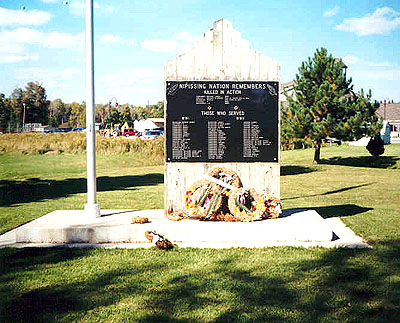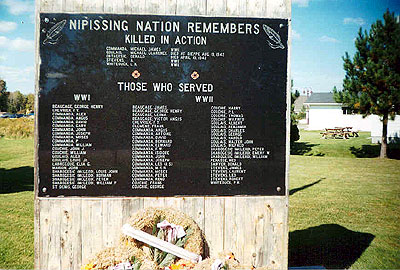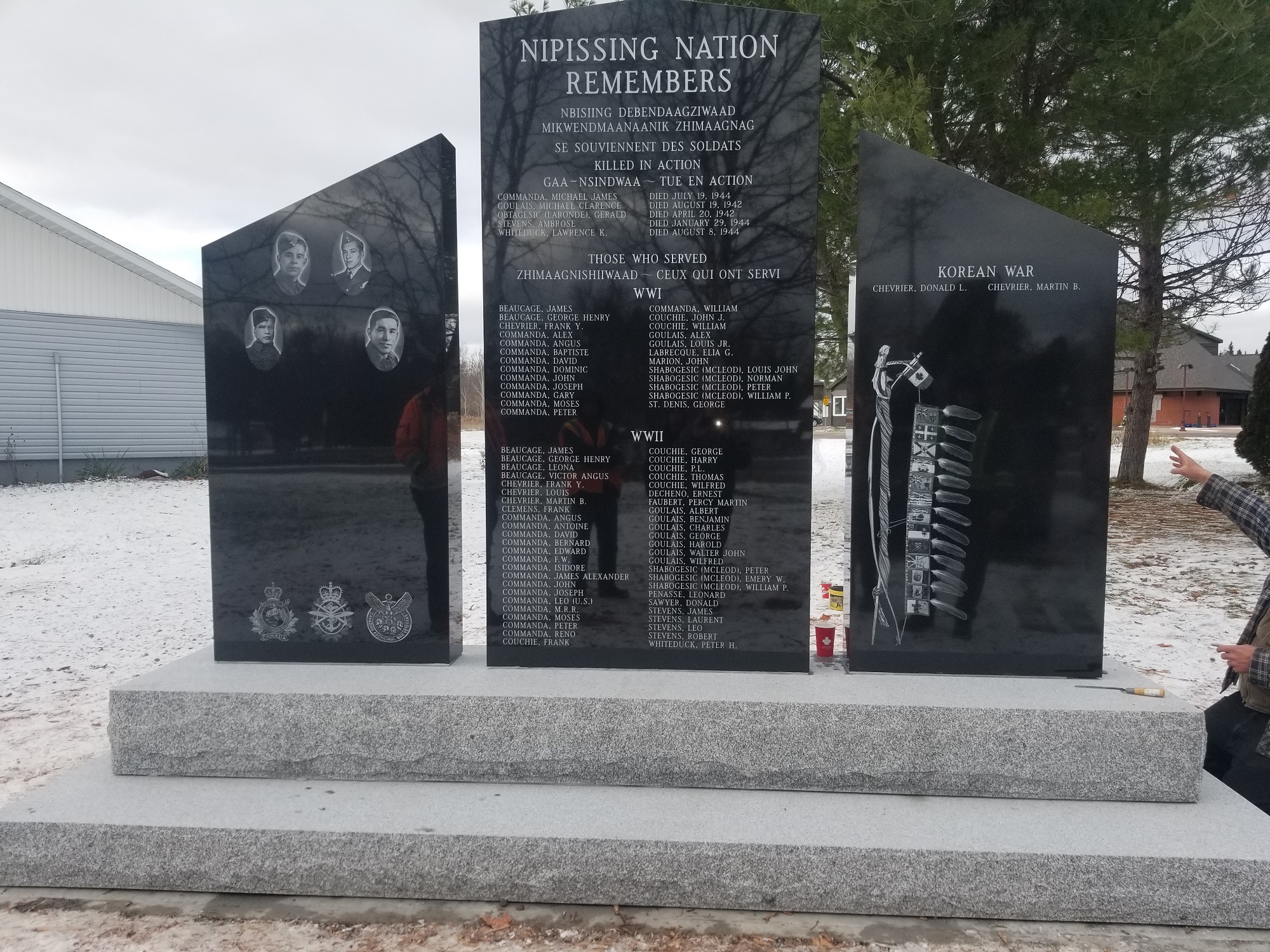The original Nipissing First Nation Cenotaph was erected by members of the Nipissing First Nation and dedicated to Anishinaabe war dead and Veterans of the First and Second World Wars. Following an inspection by Nipissing First Nation facilities manager Patrick Stevens, the decision was made to replace the community’s old cenotaph. Stevens says he stuck his finger three inches into a rotted area of the old cedar monument.
The unveiling of the new Nipissing First Nation Cenotaph was held on November 11, 2019. Captain Kim Munro walked with other soldiers in the procession. Leading the way were artist Dan Commanda, Nipissing First Nation Councillor Rick Stevens and Elder Evelyn McLeod with Anishinabek Nation Grand Council Chief Glen Hare. The young students of Lady of Sorrows Elementary School sang O Canada in Anishinaabemowin. A flag song was sung with the big drum and the Sacred Fire was heard crackling during the two minutes of silence. The cenotaph is dedicated to those who lost their lives, who served in any capacity, and those who continue to serve. The community was able to add names that were previously missing, such as those who fought in the Korean War.
Speaking in the language and English on the valour of the men and women who volunteered for the First and Second World Wars and the Korean War, Nipissing First Nation Deputy Chief Muriel Sawyer unveiled the black marble cenotaph. “The many sacrifices they made so that we may enjoy the freedom that we so often take for granted. They were not obligated to enlist in the world wars, but they did so willingly, knowing the hardships they would encounter and endure. Many of our members did not return. And we owe them a debt of gratitude.”
The cenotaph includes artwork by artist Dan Commanda. Photos of four of the five soldiers killed in action during the Second World War are etched in the black marble, a Canadian military eagle staff that took 16 hours to engrave, and the logos of the Algonquin Regiment, army, air force, navy, and the medal for Aboriginal Veterans.
On the back are two deer/wawashkesh, a row of soaring eagles spread across the top and an epitaph poppy dreamcatcher. “Every time we recognize our people, our warriors, anybody who contributes to the community, they’re honoured with an eagle feather,” Commanda said, “and those eagles on the back of the epitaph they represent the honouring of those ones who defended our borders in all the wars.”
As the procession took shape for the start of the ceremony, Dan saw an eagle fly overhead. “It just reminds me, it reminds us, that that eagle is always there for our community.”
Upgrades to the cenotaph started in the fall of 2019. The entire structure, including the concrete base, was removed. The existing plaque was carefully removed and safely stored. This project was funded by Veterans Affairs Canada and the Nipissing First Nation Trust Fund.


